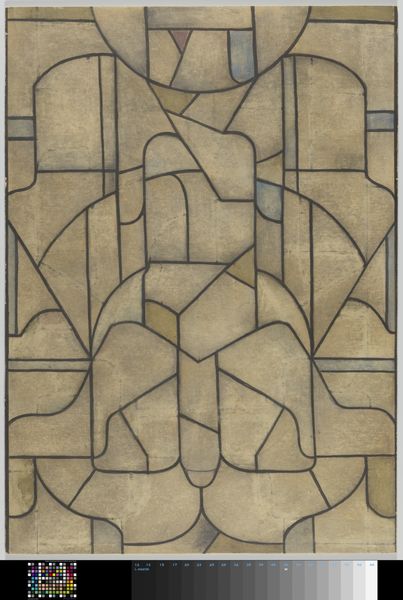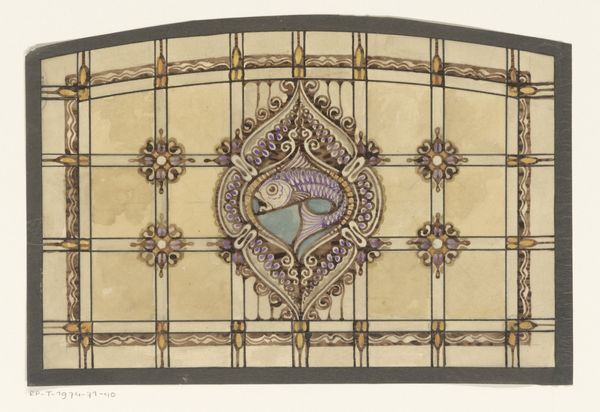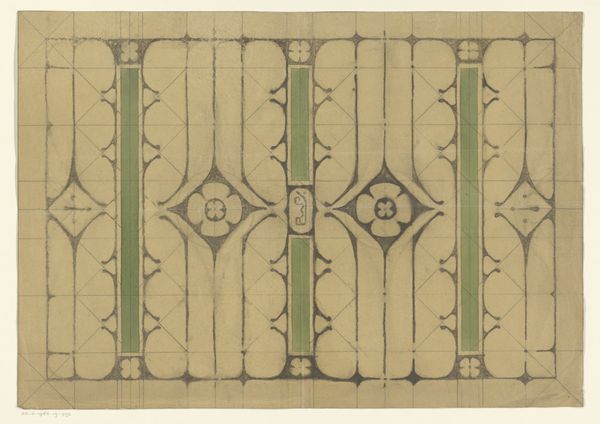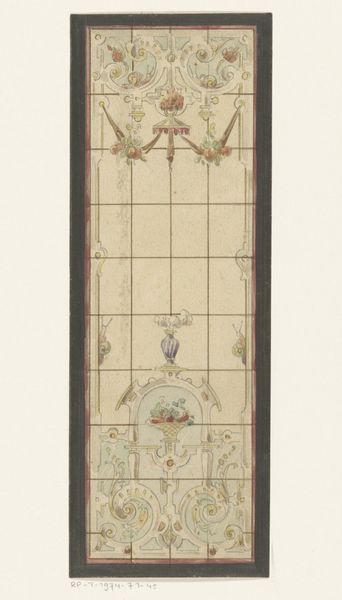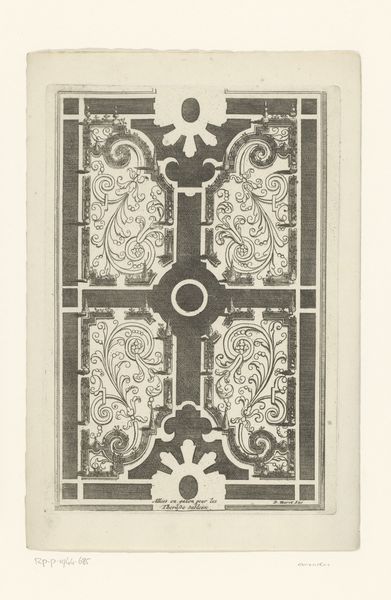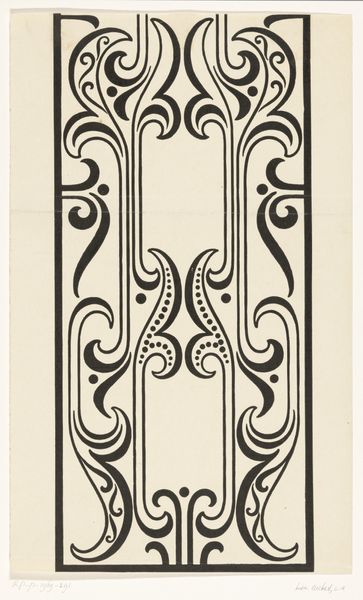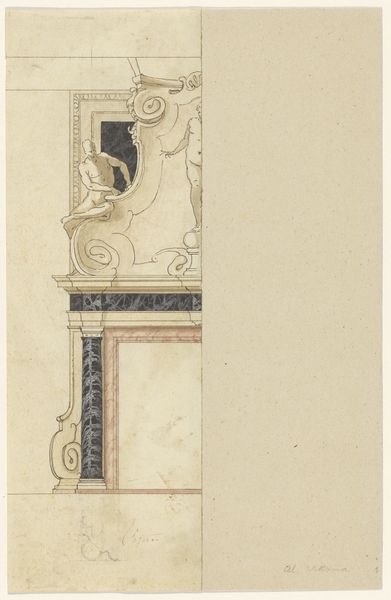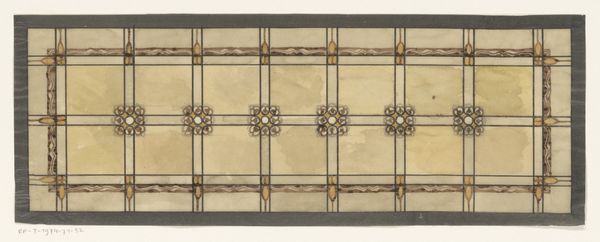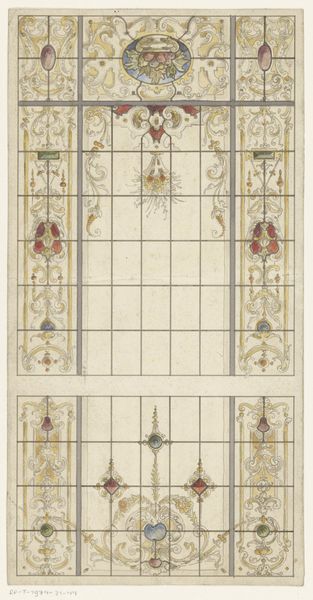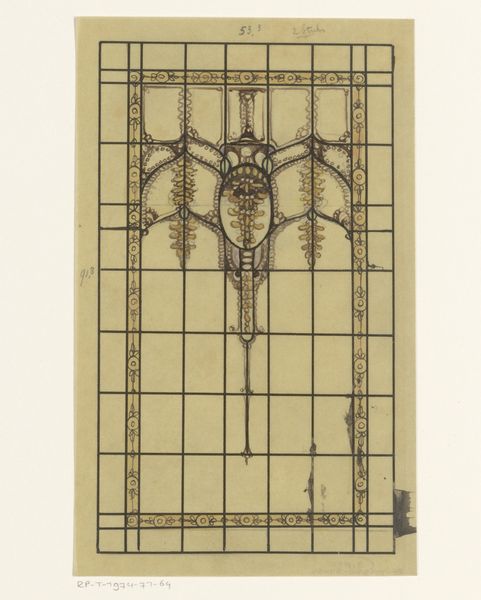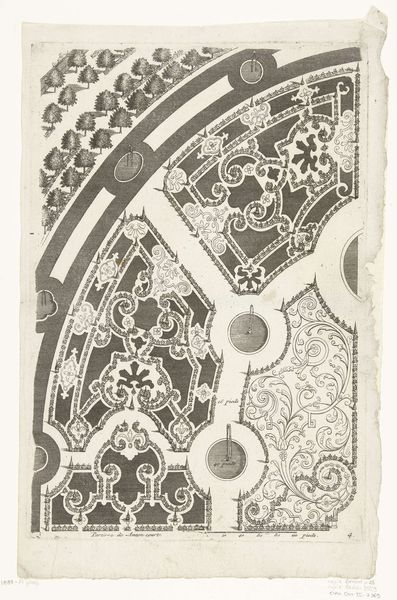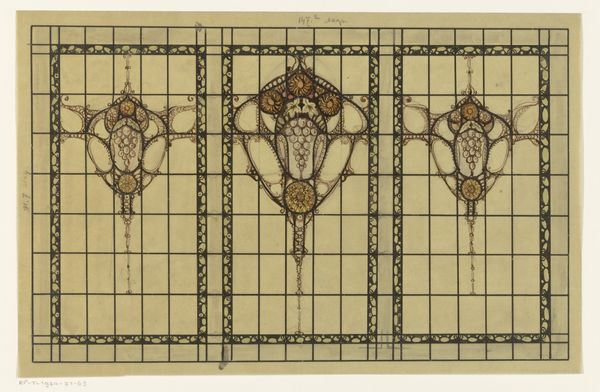
drawing, glass
#
drawing
#
art-nouveau
#
muted colour palette
#
glass
#
ethnic pattern
#
geometric
#
repetition of pattern
#
vertical pattern
#
pattern repetition
#
decorative-art
#
layered pattern
Dimensions: height 215 mm, width 125 mm
Copyright: Rijks Museum: Open Domain
Curator: Let's consider this work: "Ontwerp voor een glas in loodraam met een pauw," a design for a stained-glass window featuring a peacock, dating from after 1907. The composition immediately suggests the influence of Art Nouveau with its emphasis on organic forms and decorative embellishments. Editor: It's quite restrained actually. At first glance, the grayscale and pale purple palette evoke a certain somberness, yet the stylized peacock, swirling within its circular frame, hints at vibrant movement and perhaps even an exotic allure if we imagine the interplay of light through colored glass. Curator: Precisely! These designs were very fashionable at the beginning of the 20th Century when stained-glass was revived as a central feature in public and private architecture. Consider the social aspirations and taste cultures associated with art nouveau; this was art meant to elevate everyday experience and provide a moral compass. The peacock itself signifies pride and immortality in many cultures. Editor: I’m more interested in the work's making. What kind of labor and specific craft skills would it demand to transform a design like this into a real object? The pattern surrounding the peacock is so layered that, were it real glass, would involve significant glass-cutting, leading and soldering; not to mention careful selection of compatible glass to account for heat expansion over the window's lifespan! I am certain many hands contributed. Curator: Of course. Beyond individual artisanship, there's the commercial enterprise, the glass workshops, the designers feeding into public desire. Stained-glass windows, in this period, became symbols of a progressive social class who embraced industry while holding onto spiritual ideas, such as freedom, eternity, and peace. Editor: Absolutely. This design represents not just aesthetic tastes, but industrial capabilities, labor practices, and distribution networks shaping the cultural landscape, the real substance. And that makes it particularly significant. Curator: Indeed. The socio-political elements here resonate with many people; one can also be impressed with the object’s creation. Editor: Well, now I can almost feel that imagined light and see the many hands and skills necessary to make such art possible!
Comments
No comments
Be the first to comment and join the conversation on the ultimate creative platform.
